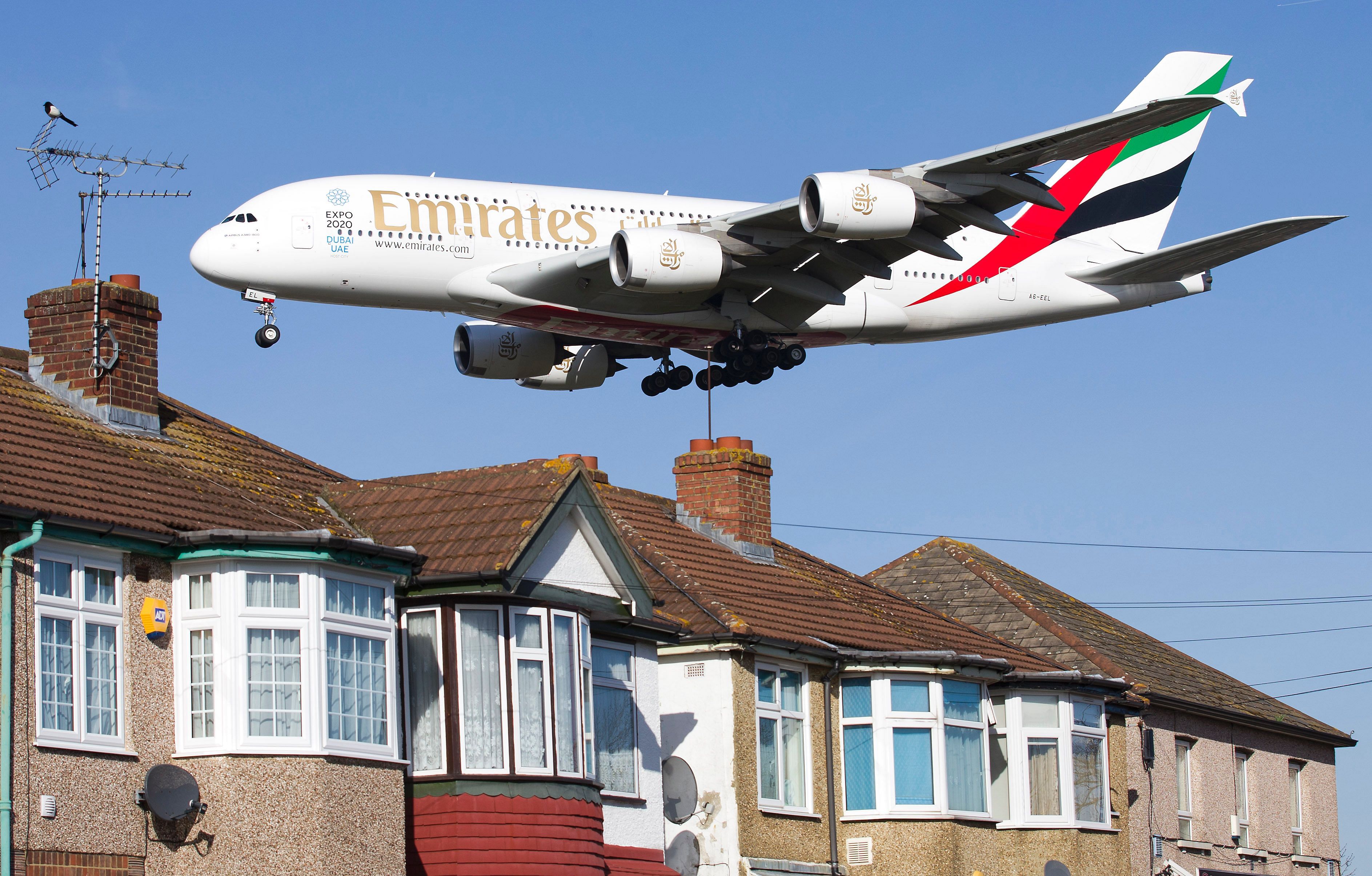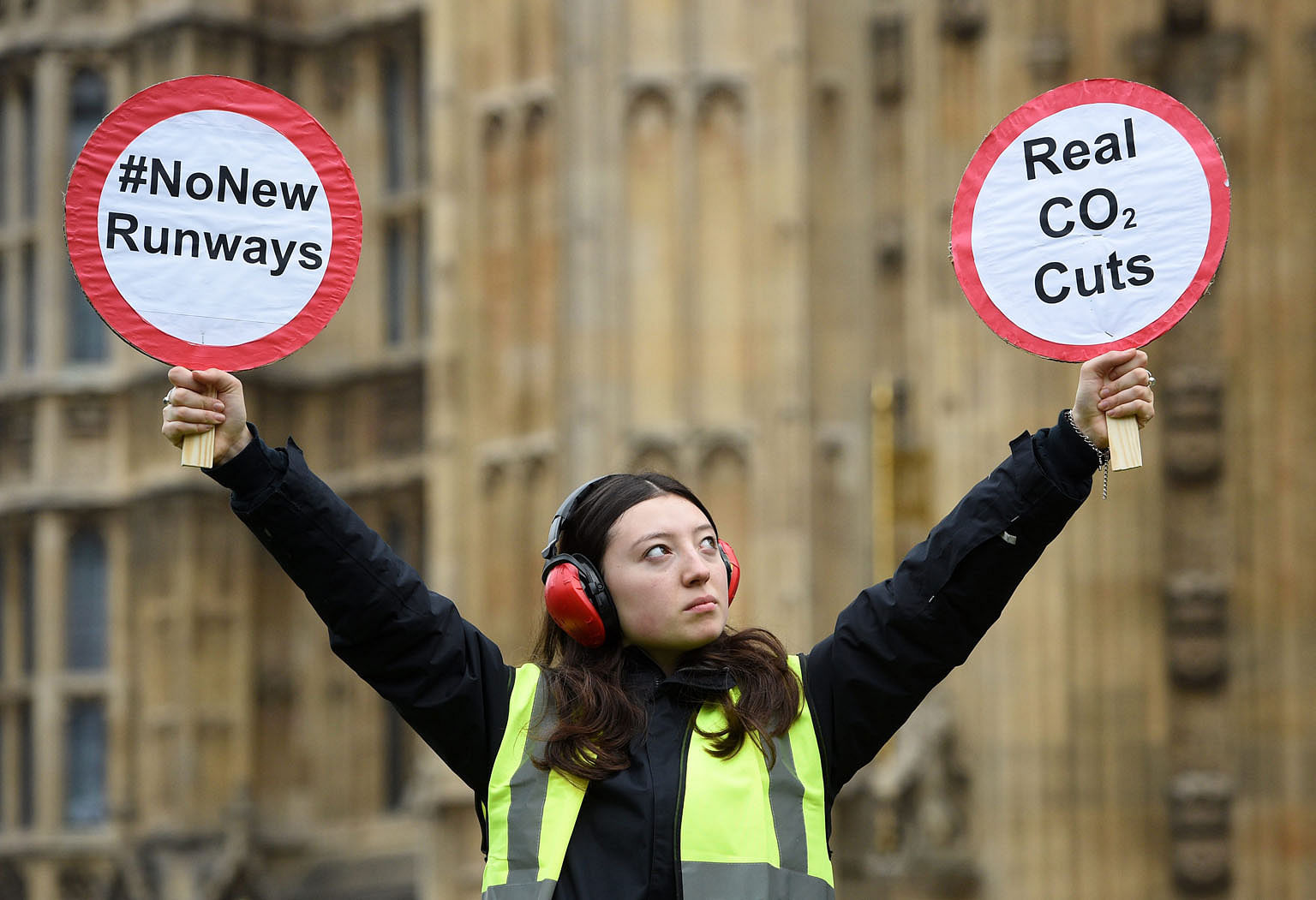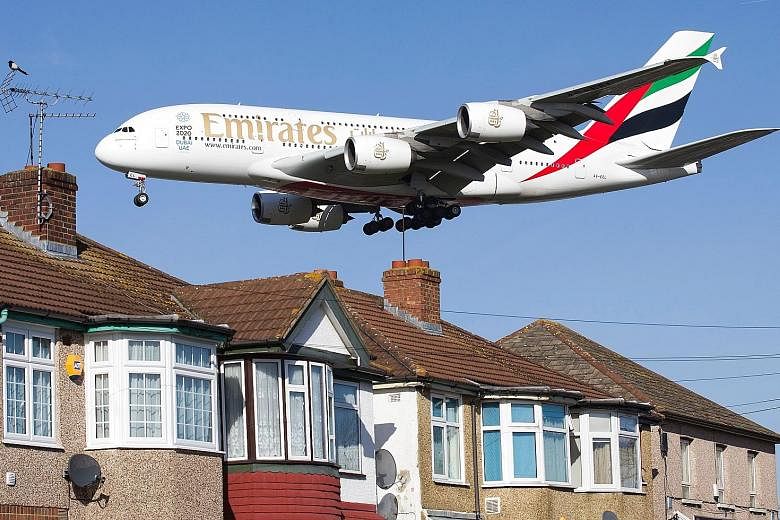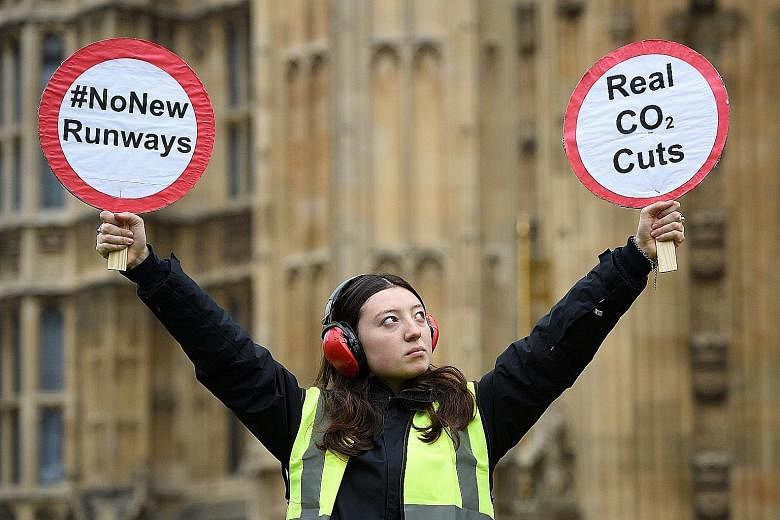LONDON • Building an additional runway at an existing airport would hardly raise any eyebrows in most developed countries. Not in Britain.
For almost half a century, the nation has been gripped by an interminable debate on whether to build a third runway at London's Heathrow Airport.
And when Prime Minister Theresa May finally decided this week to bite the bullet and authorise the construction, arguing that it was vital as Britain prepares to leave the European Union, three of her Cabinet ministers, including pro-Brexit Foreign Secretary Boris Johnson, openly broke ranks with her government.
A lawmaker from Mrs May's Conservative Party resigned his seat, forcing a by-election which the party has already said it will not contest.
The saga is not over - ahead are another year of public consultations, a further round of parliamentary approvals, and years of appeals before courts and development planning boards. The consensus is that, even if it is built, Heathrow's third runway will not be operational until 2030 at the earliest.
Seldom has there been a better example of the so-called Nimby phenomenon, the "not-in-my-backyard" culture which sums up the bizarre and contorted history of Britain's largest airport.
When Heathrow was first planned during World War II, the land on which it stands was full of apple tree orchards, just 22km away from the heart of London.

But even in those dark days of the war when the authorities had powers to do anything they wanted, the government was apprehensive about the public's reaction to the construction of an airport.
So officials resorted to a convenient lie, claiming that the airport was required to accommodate long-range bombers; the initial construction plans were stamped "secret" in red, and were tagged with notices that they "must be kept under lock and key when not in use".
Ironically, Heathrow's planners conceived of an airport of three runways right from the start. But due to lack of anticipated demand in an age when air transport was a luxury afforded by a very few, only two terminals were operational when Heathrow opened to the public in May 1946.

The first commercial flight to land at Heathrow was a converted bomber which took three days to fly from Australia; there were no terminal buildings, passengers checked in at a temporary cluster of tents, communications were handled by field phones and the only amenities were a couple of armchairs and some splendidly-named "portable chemical toilets".
Planners soon regretted missing the opportunity to construct three runways. For it became obvious that Heathrow was destined not only to be Britain's biggest airport, but also Europe's most important air hub, a position it gained in the early 1950s and has held ever since.
Heathrow now handles 75 million passengers a year. It provides the largest number of connections in Europe, offers the biggest variety of ticket prices, is the single most profitable airport in the world, and provides jobs for a quarter of a million people.
But the airport's two runways are operating at 99 per cent capacity, with one take-off or landing every 45 seconds. The slightest delay causes mayhem.
Yet all efforts to authorise the construction of another runway have run into the ground.
NOT IN MY BACKYARD
Heathrow sits in the middle of a vast London urban sprawl, home to around 60 parliamentary constituencies, about a tenth of the total in the UK. Many resent the extra noise and pollution the expansion will entail.
One should have some sympathy for the residents' predicament. For Heathrow is now surrounded by built-up areas to an extent seldom encountered elsewhere in Europe. In Kew, near London's famed botanical gardens, the serene landscape of rolling grass is disfigured by the moving shadows of aircraft flying so low that one can see their on-board passengers peering through their planes' windows.
In Sheen, near Richmond, the noise is so deafening that the horns of cars driving by are barely audible.
For plane spotters, Heathrow is literally the closest one gets to heaven. "I can tell the plane by its tone, whether it's a twinner or a four-engine jet," said Mr Peter Harding, a plane spotter who participated in a recent competition organised by BBC TV to find the spotter best qualified to identify Heathrow's approaching aircraft by their sound rather than sight.
But for local residents, hell is a better description of their predicament.
The clash is made worse by disputes over how to measure noise. The British government deems a "significant annoyance" of 57 decibels of noise over an average period of 16 hours as harmful. But the definition is based on studies done decades ago, and does not take account of what local residents such as Mr Paul McGuinness, who has submitted written evidence to the government, claim is the problem of midday peak flying hours. "The very thing that disturbs people is peak noise," said Mr McGuinness.
Still, one should not pity the local residents too much. For they occupy expensive residential properties, most of which were bought long after Heathrow was already there, so the residents knew what they were getting.
Furthermore, the value of their properties already takes into account a "noise discount". Statistically, the affluent people who live around Heathrow are also the most likely to use air transport - they just want the airport to be elsewhere.
And all local residents are entitled to subsidies to double-glaze their windows. Heathrow Airport is now offering further subsidies and has undertaken to pay 25 per cent above market rate for any property which has to be compulsorily purchased and demolished in order to construct the third runway.
YOUR LOSS, OUR GAIN
Yet all British prime ministers have ducked the hot potato and preferred to leave the decision on the third runway to their successors.
This is despite the fact that no fewer than six separate committees of inquiry have looked at the problem and analysed alternative solutions such as an expansion of Gatwick, London's secondary airport, or constructing an entirely new air hub on an island in the Thames River whose 19th century wilderness served as a backdrop for Charles Dickens' novel Great Expectations.
But all came to the conclusion that the most effective approach is another runway at Heathrow.
Mrs May, who came to power in July in the wake of a historic referendum in favour of Brexit, had previously voiced opposition to the expansion as her own constituency of Maidenhead lies in the airport's flight path.
But she calculates that she can risk annoying her traditional electoral base because a general election is not due until 2020, and the opposition Labour Party is in the doldrums.
Mrs May also enjoys backing from an unexpected quarter: nationalists in Scotland, who regard Heathrow's expansion as a boon for the Scottish economy, since the London airport feeds through Scotland-bound passengers from around the world.
Still, the fight which lies ahead remains fierce. The local authorities around Heathrow, including one in Maidenhead, will fight the decision through the courts. Environmental activists threaten obstructive action; they may include even Mr Johnson, the foreign secretary, who once vowed to lie down in front of Heathrow bulldozers.
And there is no decision on who should pay for the gigantic project, which currently has an £18.6 billion (S$31.6 billion) price tag. Airlines fear that the costs will be borne by them in the form of higher landing fees, while the airport's operators - a consortium in which Singapore's GIC holds an 11.2 per cent share - hope that the British government will bear the burden.
As the British bicker over Heathrow, Germany's Frankfurt airport already has three runways, Paris boasts four, while Amsterdam's Schiphol airport operates no fewer than six runways.
Schiphol, which has much to gain from Heathrow's dithering, has created a tradition: every year Heathrow delays its runway construction, Schiphol's management sends the British a cake.
The cake which arrived this week was particularly sumptuous. And Mr Jos Nijhuis, Schiphol's chief executive, promises to send more in the years to come.



